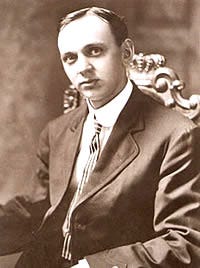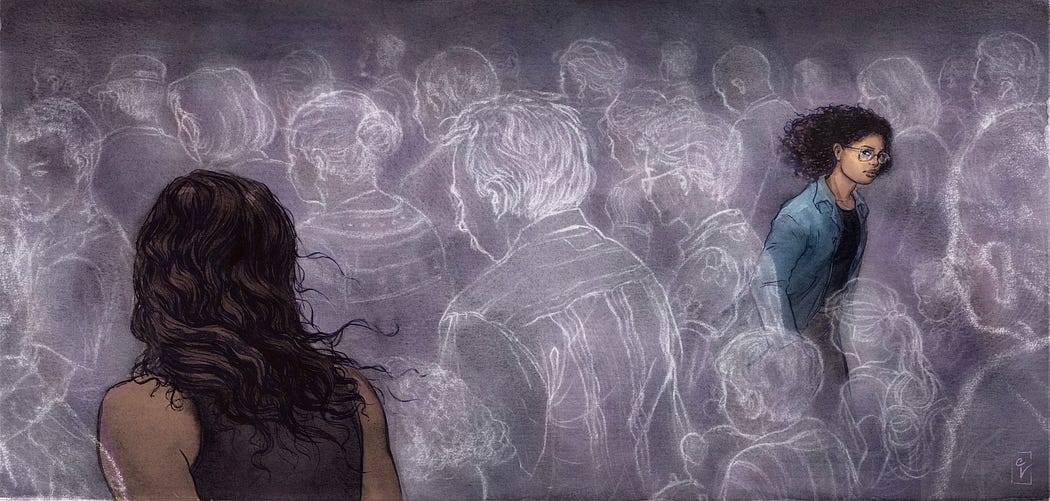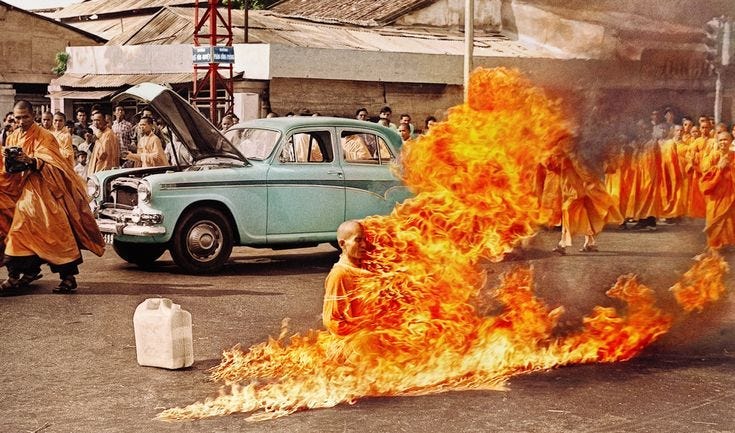Curious about the depths of human potential beyond conventional understanding? In this article, we delve into intriguing aspects of the psychic race during the Cold War, explore the realms of remote viewing, clairvoyance, arhat abilities, and beyond. Join us as we pose the compelling question: Do We All Possess Undiscovered Superpowers?
▶️ Watch SUPERHUMANS: Do We All Have Undiscovered Superpowers..? here
The Psychic Race: A Cold War Competition Between the Soviet Union and the United States
During the Cold War, a unique competition emerged between the Soviet Union and the United States, known as the “psychic race.” Starting in the 1960s and intensifying throughout the 1970s and 1980s, both Nations invested heavily in research and experiments to explore the potential military and intelligence applications of psychic abilities, such as remote viewing and psychokinesis.
The psychic race began when reports of Soviet research into psychic phenomena caught the attention of the U.S. intelligence community in the 1960s. In response, the United States initiated its own research programs in the 1970s, including studies on remote viewing conducted by the Stanford Research Institute (SRI).

Both the Soviet Union and the United States conducted various experiments and programs during this timeframe. The Soviet Institute of Brain Research investigated psychokinesis and telepathy, while the Soviet Academy of Sciences studied the abilities of psychics like Nina Kulagina and Alla Vinogradova. The KGB, the Soviet intelligence agency, reportedly employed psychics for espionage and counterintelligence purposes.
On the American side, Project Stargate, a secret U.S. Army unit, investigated the use of remote viewing for intelligence gathering from 1978 to 1995. The CIA and the Defense Intelligence Agency (DIA) funded research into remote viewing at SRI and other institutions. The U.S. military also explored the potential use of psychic abilities for locating hostages, identifying targets, and gathering intelligence.
U.S. Department of Justice’s Office
Interestingly, the use of psychics in law enforcement predates the psychic race. According to a 1993 paper by the U.S. Department of Justice’s Office of Justice Programs,
“Psychics includes clairvoyants, prophesiers, telepaths, palmists, numerologists, graphologists, and metaphysicians. Both psychics and detectives base their work on intuition to some extent. Dorothy Allison of Nutley, N.J. has assisted police in more than 4,000 investigations and has received many letters from law enforcement agencies describing how she helped them”

Allison’s psychic abilities allegedly manifested at a young age, and she began assisting law enforcement agencies in the 1960s. Some of the notable cases she claimed to have worked on include the disappearance of Patricia Hearst, the Atlanta Child Murders, and the murder of Nirvana McCall in Newark, New Jersey. Allison maintained that her insights came to her through dreams or visions.
The Gift of Sight: Remote Viewing, Clairvoyance, and Future Foretelling
Remote Viewing
Remote viewing, a practice that gained significant notoriety during the Cold War, involves employing individuals with alleged psychic abilities to gather intelligence on distant, inaccessible targets. These ‘remote viewers’ purportedly use extrasensory perception to acquire information about remote geographical locations. In 1975, the CIA enlisted Russell Targ to lead a psychic espionage program, investing over $20 million across two decades. The agency utilized remote viewing to monitor adversaries like the Soviets and combat threats from terrorists, drug traffickers, and hostage situations.

Clairvoyance
Edgar Cayce (1877–1945), known as the “Sleeping Prophet,” was a renowned American clairvoyant who demonstrated an extraordinary ability to access information while in a trance-like state. By lying down and entering a meditative state, Cayce would respond to questions posed by a conductor, claiming that his subconscious mind tapped into the Akashic Records, a universal repository of knowledge.

Some of Cayce’s most notable predictions that allegedly came to fruition include the discovery of the Dead Sea Scrolls in 1947, the rise of Hitler and World War II in the 1930s, and the medical use of blood thinners years before their development. Although not substantiated, it is also claimed that Cayce provided psychic information to the U.S. government about the location of German submarines during World War II. Cayce’s legacy as a clairvoyant continues to captivate those interested in the unexplained and the potential of human consciousness.
- Gerard Croiset (1909–1980), a Dutch psychic and parapsychologist, gained international recognition for his alleged psychic detective work and his assistance in various criminal investigations. Claiming to possess the ability of psychometry, Croiset believed he could obtain information about an object or person by touching or being in close proximity to an object associated with them. His involvement in law enforcement began in the 1940s when he started working with the Dutch police on missing persons cases and other investigations.

Some of the notable cases Croiset claimed to have worked on include the successful location of the body of Marten Visser, a missing boy in the Netherlands, in 1962; providing accurate information to the family of J. Fletcher Maupin, a missing American businessman; and assisting Dutch police in the investigation of the murder of Wim Klokgieters.
Reiki and Mediumship: Unveiling the Superpowers Within
Reiki, a captivating alternative therapy that traces its roots to Japan in the late 19th or early 20th century, is founded on the belief that a universal energy flows through the body. This energy can be harnessed by a skilled practitioner to promote healing and relaxation, unleashing a remarkable superpower that lies dormant within us all. The practice of Reiki involves the practitioner placing their hands on or near the recipient’s body in a series of positions, channeling the universal energy, often referred to as “ki” or “chi,” to promote balance and well-being in the body, mind, and spirit.

A 2008 study published in the Journal of Alternative and Complementary Medicine found that Reiki significantly improved pain and anxiety levels in women after cesarean delivery, hinting at its potential to alleviate both physical and emotional distress. Furthermore, a 2010 study in the same journal indicated that Reiki may have a positive impact on heart rate variability, a measure of autonomic nervous system function, suggesting that this therapy could help regulate the body’s natural healing processes.
Nina Kulagina: The Soviet Psychic Who Captivated the World with Her Telekinetic Powers
Nina Kulagina, born Ninel Sergeyevna Mikhailova (1926–1990), was a Soviet woman who gained international recognition in the late 1960s for her extraordinary claims of telekinetic abilities. Kulagina reported that her powers first manifested during her youth, with objects mysteriously moving around her when she was angry. She claimed that focused meditation and physical discomfort preceded her telekinetic feats, drawing the attention of Soviet scientists, particularly those based in Leningrad (now St. Petersburg), who became intrigued by the opportunity to study her abilities.

Kulagina’s telekinetic powers were subjected to nearly two decades of rigorous scientific investigation by Soviet researchers, known for their unforgiving and humorless approach. The fact that she was not quickly dismissed or sent to Siberia for using tricks suggests that there may have been some credibility to her claims.
Extraordinary Beings with Supernatural Powers in Buddhist Tradition
In Buddhist tradition, arhats are revered as enlightened beings who have attained a state of spiritual perfection. These extraordinary individuals are believed to possess a wide array of supernatural powers, known as iddhi, which include abilities such as levitation, walking on water, teleportation, passing through solid objects, and reading the minds of others. Additionally, arhats are often attributed with heightened senses, such as clairvoyance and clairaudience, as well as the remarkable ability to remember their past lives.
Beyond their psychic powers, arhats are sometimes described as having control over the elements, with legends depicting them calming storms, controlling fire, and subduing wild animals. Some traditions even suggest that arhats can live for centuries, defying the normal limits of human life. However, despite these awe-inspiring abilities, arhats are primarily revered for their profound wisdom, deep compassion, and their achievement of complete freedom from suffering. These qualities, rather than their supernatural powers, are considered the true hallmarks of an arhat’s spiritual attainment.

A well-known instance of a Buddhist monk exhibiting extraordinary resolve and self-control is that of Thích Quảng Đức, who famously set himself on fire in Saigon (now Ho Chi Minh City) on June 11, 1963. This shocking act of self-immolation was a protest against the South Vietnamese government’s persecution of Buddhists. Thích Quảng Đức’s unwavering composure during this extreme demonstration of his faith and conviction left an indelible mark on the world, drawing attention to the plight of Buddhists in Vietnam and becoming an iconic image of the era. These examples, while controversial and subject to debate, highlight the enduring fascination with the potential for human beings to manifest extraordinary abilities through spiritual practice and deep conviction.
But wait, there’s more..! Watch SUPERHUMANS: Do We All Have Undiscovered Superpowers in the newest episode.

Comments & Upvotes